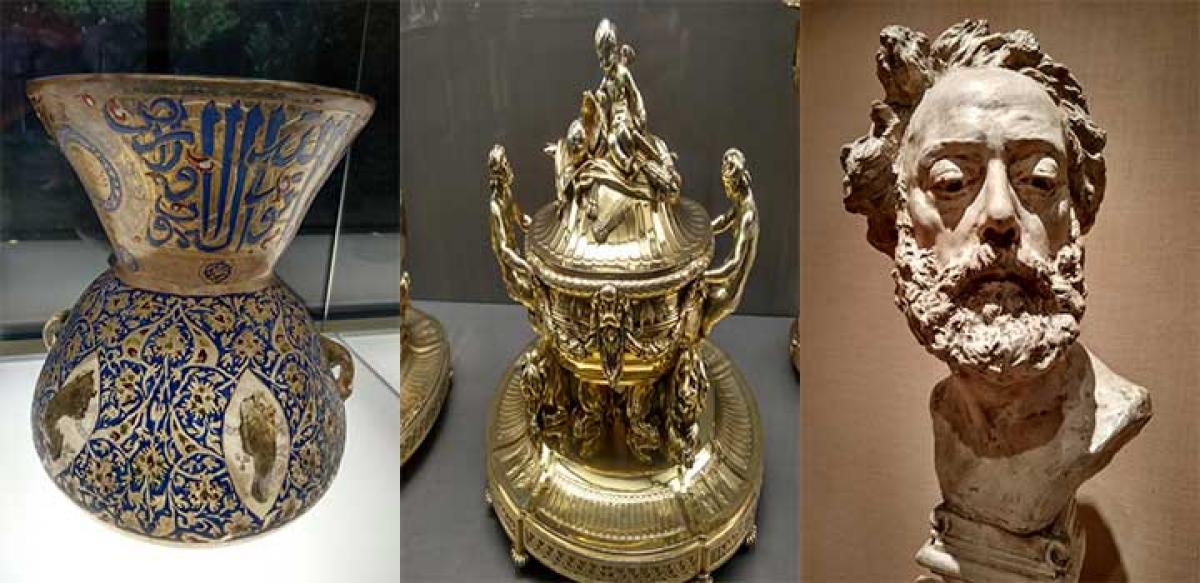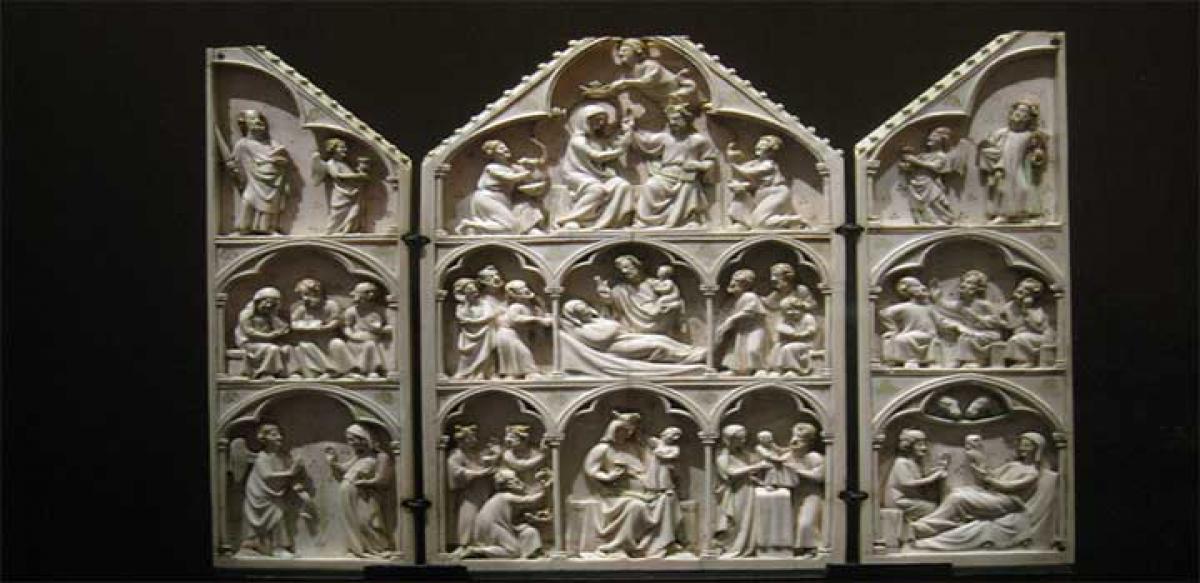Live
- Party gives everyone opportunities: Punjab Congress chief at Faridkot campaign
- Nikhil, Dhruva & Nikeetaa secure titles in INAC 2024
- Swati Sharma completed 60 parikramas around Shivling to get scene right
- 189 plaints of MCC violations, 23 cases against hate speeches lodged in Karnataka
- Afridi, Chapman rise; Suryakumar remains No.1 T20 batter in latest ICC T20I rankings
- RBI issues red alert on illegal entities in forex market
- Defence Minister Rajnath Singh slams Congress over 'appeasement' politics
- WB moves SC against Calcutta HC order axing 25,753 school jobs
- Time is right for BJP to make an entry into Kerala: Amit Shah
- REC okays Rs 1,869 crore loan for Kiru hydro project in J&K
Just In

Lisbon is like a beautiful lady in a gathering, whose elegance is magnetic and whose charisma, quite magical. Sitting pretty on seven hills, Portugal’s star attraction Lisbon unravels her charms rather quietly, as one keeps exploring. Known more for its cafe culture and soulful Fado music, Lisbon’s classy treasures are revealed to those who are in quest.
Gulbenkian Museum in Lisbon is a must see attraction. The museum is a one man’s collection, which shows his love for art and perseverance

Lisbon is like a beautiful lady in a gathering, whose elegance is magnetic and whose charisma, quite magical. Sitting pretty on seven hills, Portugal’s star attraction Lisbon unravels her charms rather quietly, as one keeps exploring. Known more for its cafe culture and soulful Fado music, Lisbon’s classy treasures are revealed to those who are in quest.
When asked, what I would like to see in Lisbon? Gulbenkian Museum topped my list. I love single man collections and admire their commitment towards art preservation and promotion. I was also nostalgic about the documentary film that I made a few years ago on Salar Jung Museum (Hyderabad), a similar one man collection.
Salar Jung III (1889–1949) and Gulbenkian (1869-1955), contemporaries from two different worlds shared the same passion and turned it into immortal legacies. This is what drew me to one of the top most attractions of Lisbon.

Set amidst greenery, the museum has huge picture windows providing breathtaking views out to the extensive gardens. My well informed museum guide, Filipa Santos showed me around, throwing light on the various objects in the priceless collection and the man behind it.
Calouste Sarkis Gulbenkian was born in Scutari in 1869 into a family of Armenian origin. A pioneer of the oil industry he played a major role in making the petroleum reserves of the Middle East available to Western development. An exceptionally discerning and knowledgeable collector, he came to Portugal in 1942 as the Second World War raged in Europe. He spent the remaining years of his life in Lisbon and died there in 1955.
Calouste Gulbenkian revealed his passion for art at an early age. Throughout his life, he assembled an eclectic and unique collection that was influenced by his travels and his personal taste, and sometimes involved lengthy and complex negotiations with the leading experts and specialist dealers.
His attachment to the pieces that he acquired was so strong that he even called them his "children". A favourite sculpture of his was the marble original of Houdon's famous Diana, which had belonged to Catherine of Russia and which Gulbenkian purchased from the Hermitage Museum in 1930.
.jpg)
His wide-ranging collection totals over 6,000 and covers various periods and areas: Egyptian, Greek, Roman, Islamic, Oriental and European art, dating from antiquity until the early twentieth century. The phrase “only the best” accurately defines the criteria by which he was guided, and the passionate affection he developed for the objects.
His pieces were acquired through intermediaries, directly from public and private owners, or at auctions. Gulbenkian amassed a huge fortune and an art collection, which he kept in a private museum at his Paris house. His four-storey, three-basement house on Avenue d'Iéna was said to be crammed with art. When the oil magnate grew tired of an object he would remove it from his collection by giving it away as a present, exchanging it or using it in part-payment for something else.
Gulbenkian was also interested in enriching public collections. He contributed most generously either by financial aid or by donating pieces to cultural institutions. Fourteen years after the death of this illustrious collector his wish was fulfilled, when the Calouste Gulbenkian Museum-specially built to house his collection-opened in Lisbon.
Among the many treasures that I saw and admired, the most striking are Persian blue pottery, Mamluk glass Mosque lamps, rare Persian carpets, handmade Bible depicting Genesis, French ornamental furniture, gold and silver dinner sets, tapestries, Rene Lalique’s exquisitely carved jewellery, Renaissance paintings by European masters and the most amazing ‘Diana’, goddess of chastity, depicted naked.
Gulbenkian Museum has been described as being one of Europe’s best-kept secrets. Having inspired by the discovery of this treasure, I continued my quest in search of the other nuggets of Lisbon.
Fact file:
Portugal won the Conde Naste Award for Top Destination for 2015
How to reach: Lisbon is well connected. TAP Portugal, the flag carrier airline of Portugal is a member of the Star Alliance and operates almost 2,000 flights a week to 88 destinations in 38 countries worldwide.
Visa: Shengen
Currency: Euro
Shopping: Ceramic ware, decorative tiles, embroidered garments
Must eat: Pasteis de nata (the egg tarts that melt in the mouth!)
http://museu.gulbenkian.pt/Museu/en/Homepage
http://www.turismodeportugal.pt/
By:Vijaya Pratap
| Stay updated on the go with The Hans India News App. Click the icons to download it for your device. |

© 2024 Hyderabad Media House Limited/The Hans India. All rights reserved. Powered by hocalwire.com







